We use information collected through cookies and similar technologies to improve your experience on our site, analyze how you use it and for marketing purposes.
Your privacy settings
We and our partners use information collected through cookies and similar technologies to improve your experience on our site, analyze how you use it and for marketing purposes. Because we respect your right to privacy, you can choose not to allow some types of cookies. However, blocking some types of cookies may impact your experience of the site and the services we are able to offer. In some cases, data obtained from cookies is shared with third parties for analytics or marketing reasons. You can exercise your right to opt-out of that sharing at any time by disabling cookies.
Manage Consent Preferences
Necessary
Always ON
These cookies and scripts are necessary for the website to function and cannot be switched off. They are usually only set in response to actions made by you which amount to a request for services, such as setting your privacy preferences, logging in or filling in forms. You can set your browser to block oralert you about these cookies, but some parts of the site will not then work. These cookies do not store any personally identifiable information.
Analytics
These cookies and scripts allow us to count visits and traffic sources, so we can measure and improve the performance of our site. They help us know which pages are the most and least popular and see how visitors move around the site. All information these cookies collect is aggregated and therefore anonymous. If you do not allow these cookies and scripts, we will not know when you have visited our site.
Embedded Videos
These cookies and scripts may be set through our site by external video hosting services likeYouTube or Vimeo. They may be used to deliver video content on our website. It's possible for the video provider to build a profile of your interests and show you relevant adverts on this or other websites. They do not directly store personal information, but are based on uniquely identifying your browser and internet device. If you do not allow these cookies or scripts it is possible that embedded video will not function as expected.
Google Fonts
Google Fonts is a font embedding service library. Google Fonts are stored on Google's CDN. The Google Fonts API is designed to limit the collection, storage, and use of end-user data to only what is needed to serve fonts efficiently. Use of Google Fonts API is unauthenticated. No cookies are sent by website visitors to the Google Fonts API. Requests to the Google Fonts API are made to resource-specific domains, such as fonts.googleapis.com or fonts.gstatic.com. This means your font requests are separate from and don't contain any credentials you send to google.com while using other Google services that are authenticated, such as Gmail.
Marketing
These cookies and scripts may be set through our site by our advertising partners. They may be used by those companies to build a profile of your interests and show you relevant adverts on other sites. They do not store directly personal information, but are based on uniquely identifying your browser and internet device. If you do not allow these cookies and scripts, you will experience less targeted advertising.
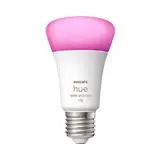
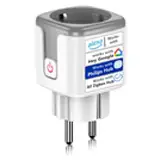
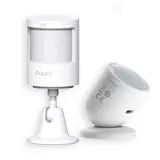
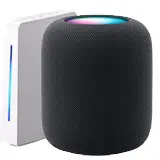
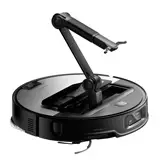

Hubs vs. standalone devices: which is the better choice?
Are you at a crossroads with home automation or smart device management? You've probably wondered: Is a centralized hub better, or is a collection of devices that work on their own the way to go? The answer isn't as simple as a "yes" or "no." It depends on your needs, your budget, and your comfort level with technology. This article will guide you through the pros and cons of both options, so you can make the best decision for your home or business.
Centralized Hubs: The Brain of Your Smart Home
A centralized hub acts as the brain of your smart home. It connects all your compatible devices, allowing you to control them from a single app or interface. Think of it as a conductor coordinating all the musicians to create a beautiful symphony. A centralized system allows for more efficient management and, often, greater compatibility between different brands.
Advantages of Using a Hub
Disadvantages of Using a Hub
Independent Devices: The Freedom to Choose
Standalone devices operate directly via your Wi-Fi or Bluetooth network, without the need for a centralized hub. Each device is controlled individually through its own app or via voice assistants like Alexa or Google Assistant. Standalone devices offer flexibility and a more affordable entry point into the world of the smart home.
Advantages of Using Standalone Devices
Drawbacks of Using Standalone Devices
Direct Comparison: Hubs vs. Standalone Devices
To help you make a more informed decision, here's a table summarizing the main differences between hubs and standalone devices:
What's the best option for you?
The choice between a centralized hub and independent devices depends on several factors. Consider the following:
Factors to Consider
Common Scenarios
Recommendations and Best Practices
To get the most out of your smart home, whether you choose a hub or standalone devices, follow these tips:
Tips for Smart Devices
Best Practices for Smart Home Security
Conclusion
In short, both centralized hubs and standalone devices have their own pros and cons. The best choice for you depends on your needs, your budget, and your comfort level with technology. If you're looking for centralized control, advanced automation, and compatibility with a wide range of devices, a hub is the way to go. If you want a more affordable, easy-to-set-up, and flexible solution, standalone devices may be enough.
Regardless of which option you choose, remember to prioritize the security and privacy of your smart home. Make sure you choose trustworthy brands, keep your devices updated, and use strong passwords. Now it's your turn! What kind of smart home system do you prefer, and why? Share your thoughts and experiences in the comments.
Related Posts
Smart planters: automatic watering for your plants
Tired of forgetting to water your plants? Going on vacation and worried about their well-being? Worry no more! Smart pots have arrived to revolutionize your plant care. What are Smart Pots? Smart pots are plant containers that incorporate technology to automate watering and, in some cases, even…
Smart home maintenance automation.
Tired of spending your weekends cleaning gutters or watering the lawn? Smart home maintenance automation is here to save you. Welcome to the future where your house almost takes care of itself! What is Smart Home Maintenance Automation? Smart home maintenance automation uses internet-connected devices (the …
The best apps for managing a smart home
Home automation is no longer a thing of the future. It is the present. And the key to control it is... in your pocket. Can you imagine controlling the lights, the temperature, and even the security of your home from your smartphone? It's possible! And for that, you need the right apps. This article will guide you through the fascinating world of ...
"Is it possible to control a smart home from a car using CarPlay or Android Auto?"
Imagine this: you get home after a long day at work. Before you even park your car, you open the garage, turn on the living room lights and set the heating to a comfortable temperature. Sounds futuristic, right? But did you know that this is possible, today, by controlling your smart home from your car with CarPlay ...